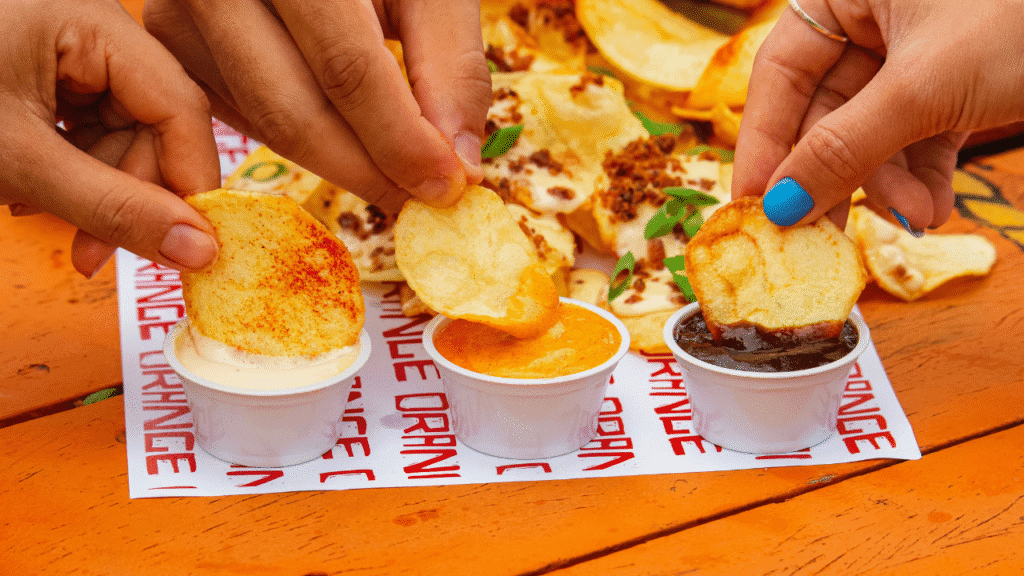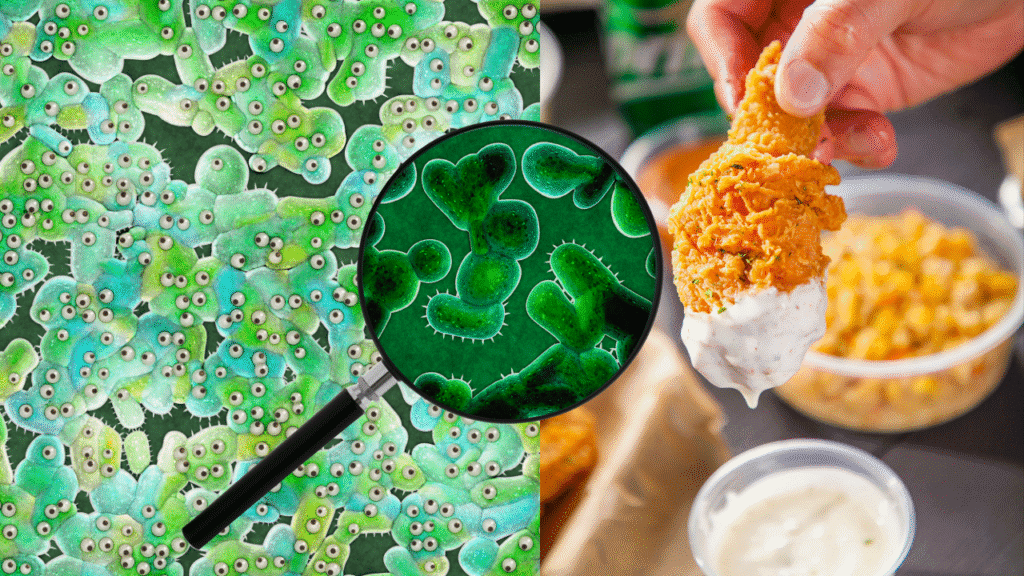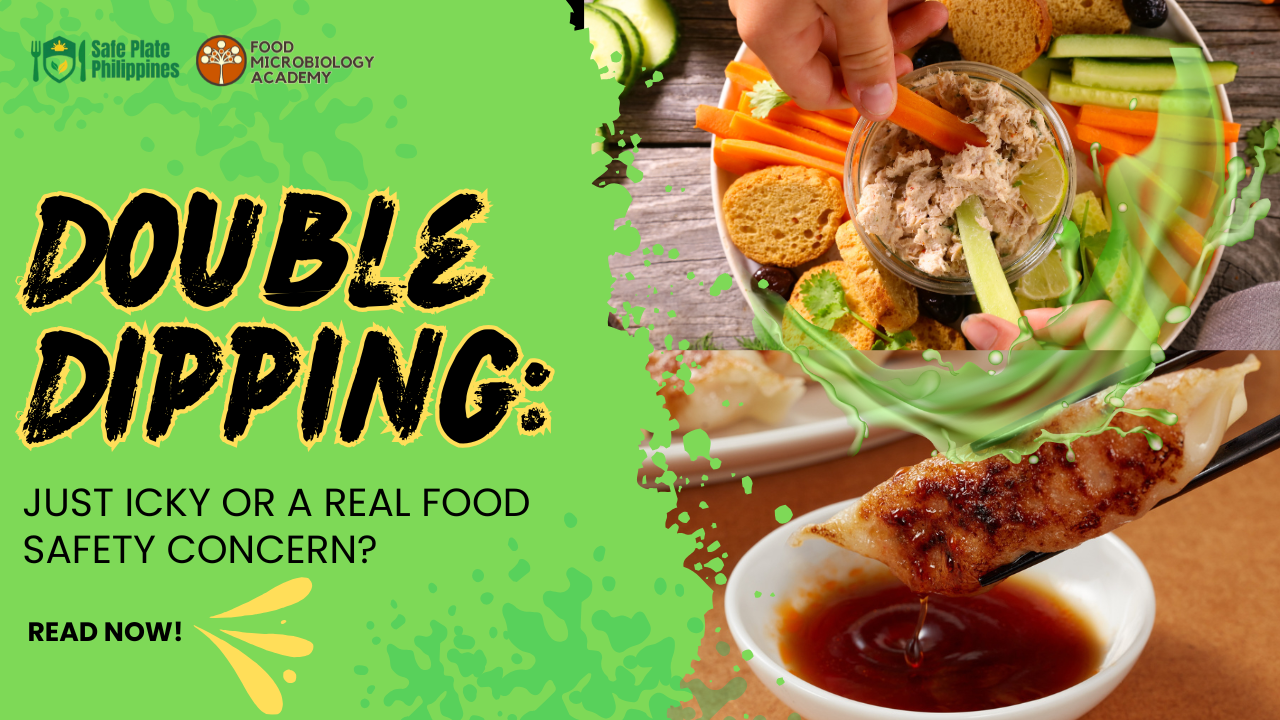We’ve all been there: a party, a bowl of chips, and a communal dip. Someone takes a chip, dips it, takes a bite, and then dips it again. Gasps echo in the room, followed by the age-old debate: Is double-dipping really that bad? Or is it just a social faux pas?
Some people laugh it off, others cringe, and a few may actually push the bowl away in silent horror. What makes this such a divisive act? Is it just a question of manners, or is there actual science that proves double-dipping can spread germs?
To settle this once and for all, let’s break it down with science, culture, and a dash of food etiquette.
The Myth: “Double Dipping Is Harmless”
Supporters of double-dipping often argue that it’s no big deal. You’ve probably heard some of these classic defenses:
- “It’s just my saliva—it won’t hurt anyone.”
- “The sauce is acidic, so bacteria will die anyway.”
- “Families share food all the time, this is no different.”
On the surface, these points seem reasonable. After all, many of us grew up in households where spoon-sharing, drinking from the same glass, or passing around a serving fork was totally normal. If we didn’t get sick then, why worry about a little double dipping now?
But here’s the catch: “feeling fine” doesn’t always equal “no germs.” In fact, many infectious diseases spread through saliva, even before symptoms appear (Centers for Disease Control and Prevention [CDC], 2024).

The Science: What Really Happens When You Double Dip
In 2009, a team of researchers at Clemson University decided to put the double-dipping debate to the test. Their work, later published in the Journal of Food Safety, remains one of the most cited studies on the subject.
Here’s what they did:
- Volunteers were asked to bite into chips.
- Then, they dipped those same chips back into communal bowls of salsa, cheese dip, or chocolate sauce.
- Researchers measured whether bacteria transferred from the chip (and saliva) into the dip.
The results? Eye-opening.
- Salsa was the worst offender. Because it’s thinner and runnier, bacteria from saliva easily spread throughout the entire bowl. Within just a few minutes, salsa that had been double dipped showed significantly higher microbial counts.
- Cheese and chocolate dips fared better, but not by much. They were thicker, so bacteria didn’t disperse as quickly. However, contamination still occurred.
- Even worse, some of the bacteria survived and had the potential to multiply depending on the dip’s composition.
Translation: Double dipping really does transfer oral microbes into the shared dip. And those microbes don’t just vanish, they can stick around, and sometimes thrive.

What Kind of Germs Are We Talking About?
Most of the time, the bacteria in your mouth won’t cause serious harm to others. But “harmless” doesn’t always mean risk-free.
Here are some potential culprits:
- Streptococcus mutans: The bacteria most responsible for cavities. While it won’t kill you, it’s not exactly something you want to share in a party dip (Loesche, 1986).
- Cold and flu viruses: Yes, viral particles can spread via saliva, especially if someone is in the contagious stage (CDC, 2024).
- Norovirus: One of the most infamous foodborne pathogens, often linked to outbreaks in communal dining settings. It spreads through saliva and contaminated food (Hall et al., 2011).
- Helicobacter pylori: This bacterium, associated with stomach ulcers, can also spread through saliva and shared utensils (Brown, 2000).
For children, the elderly, or people with weakened immune systems, even microbes considered “mild” can cause illness (World Health Organization [WHO], 2023).
Why It Matters: More Than Just Gross
Let’s be honest—part of the reaction to double dipping is psychological. Watching someone stick their soggy, half-chewed chip back into the salsa bowl is just… unpleasant. But beyond the ick factor, there are legitimate reasons to avoid it.
1. Vulnerable Populations Are at Risk
Kids, seniors, and immunocompromised individuals may not fight off everyday microbes as well as healthy adults (WHO, 2023).
2. Viral Transmission
Unlike bacteria, viruses don’t need to “grow” in the dip to be infectious. Even a small amount of saliva could carry enough viral particles to infect someone else (CDC, 2024).
3. Unpredictable Factors
The risk depends on a lot of variables: how viscous the dip is, how quickly it’s eaten, and who’s sharing it. It’s impossible to guarantee safety, especially in mixed social groups.
The Social Factor: Etiquette Meets Microbiology
Beyond science, double-dipping is also a cultural and social issue. Food sharing is universal, but the rules around it vary widely.
- In many Asian and Middle Eastern cultures, communal meals are common, but often utensils—not saliva-covered chips—are used to serve food from shared dishes.
- In Western settings, especially parties, the expectation is often that each guest keeps the food-to-mouth-to-food cycle private. Double dipping can easily be interpreted as disrespectful or inconsiderate.
Food isn’t just about nourishment; it’s about trust, respect, and community. Double dipping crosses an invisible line for many people, even if the health risks are minimal in some cases.
The Fact: Double Dipping Can Spread Germs
So where does the evidence leave us?
- Science confirms: Double dipping transfers bacteria into dips.
- Risk levels vary: Salsa spreads germs faster than cheese or chocolate, but no dip is immune.
- Health impact depends: For healthy adults, the risk of serious illness is usually low—but not zero.
Better Ways to Share Dips
Thankfully, you don’t have to ban communal chips and dips from your next gathering. A few simple strategies can keep the fun while cutting down the germs:
- Individual Portions
Serve dips in small cups or bowls. Each guest gets their own portion—no need to worry about what ends up in the main bowl. - Spoon It Out First
Provide a serving spoon so guests can scoop dip onto their plates before eating. Once it’s on your plate, you can double dip all you want. - Extra Utensils
Keep extra forks, spoons, or toothpicks handy. Guests can use them to portion out food without contaminating the main bowl. - Creative Serving Ideas
- Use hollowed-out vegetables like bell peppers or cucumbers as single-serve dip cups.
- Pre-portion dips in shot glasses for a fun twist.
- Arrange chip-and-dip “boats” on appetizer spoons for a stylish, germ-free option.
- Host Cues
If you’re the host, set the tone. Casually mention, “Let’s keep it single dip only, plenty for everyone!” A little humor goes a long way in avoiding awkwardness.
Key Takeaways
The double-dipping debate has raged on for years, but science has spoken: it’s not just a quirky habit, it’s a legit way to spread germs. While the risk of serious illness is often low, why take chances, especially when alternatives are so easy?
Whether you care about health, social etiquette, or just not grossing out your friends, the verdict is clear: avoid double-dipping. Grab a spoon, portion your dip, and enjoy the party without the added side of microbes.
Because let’s face it—chips and salsa are delicious. Chips and saliva? Not so much.
References
Brown, L. M. (2000). Helicobacter pylori: Epidemiology and routes of transmission. Epidemiologic Reviews, 22(2), 283–297. https://doi.org/10.1093/oxfordjournals.epirev.a018040
Centers for Disease Control and Prevention. (2024). How infections spread. U.S. Department of Health & Human Services. https://www.cdc.gov/infection-control/hcp/healthcare-personnel-infection-control/index.html
Dawson, P., Han, I., Cox, M., Black, C., & Simmons, L. (2009). Residence time and food contact time effects on transfer of Salmonella Typhimurium from surfaces to tomatoes by dipping. Journal of Food Safety, 29(1), 7–18. https://doi.org/10.1111/j.1745-4565.2008.00137.x
Hall, A. J., Vinjé, J., Lopman, B., Park, G. W., Yen, C., Gregoricus, N., & Parashar, U. D. (2011). Updated norovirus outbreak management and disease prevention guidelines. Morbidity and Mortality Weekly Report, 60(RR03), 1–15. https://www.cdc.gov/mmwr/preview/mmwrhtml/rr6003a1.htm
Kavalier F. (2008). Double dipping: the new challenge for health and safety. BMJ : British Medical Journal, 336(7639), 297. https://doi.org/10.1136/bmj.39481.918090.C2
Loesche, W. J. (1986). Role of Streptococcus mutans in human dental decay. Microbiological Reviews, 50(4), 353–380. https://doi.org/10.1128/mr.50.4.353-380.1986
World Health Organization. (2023). Food safety. https://www.who.int/news-room/fact-sheets/detail/food-safety



